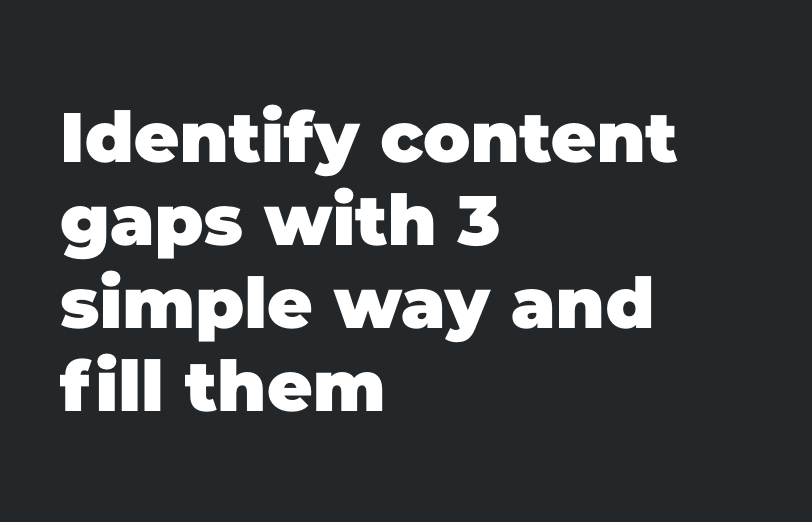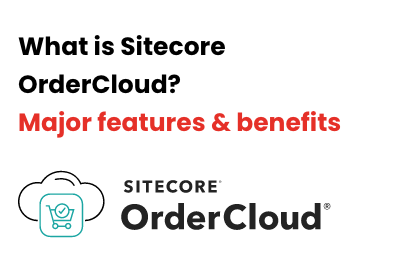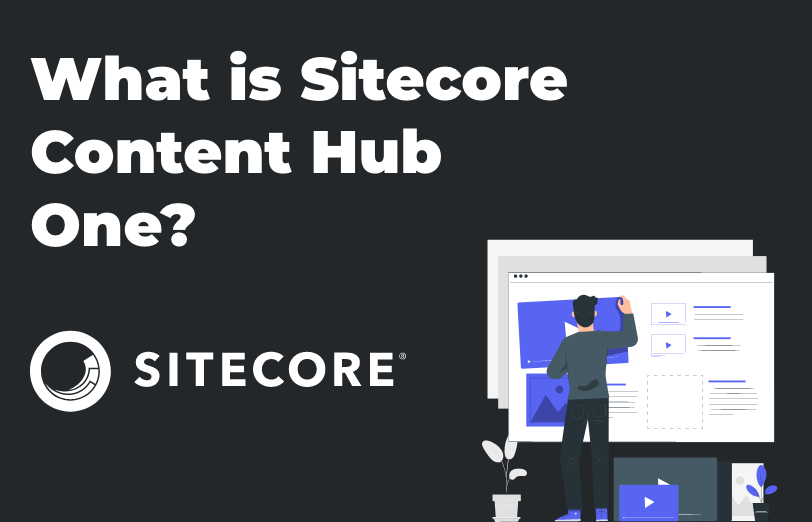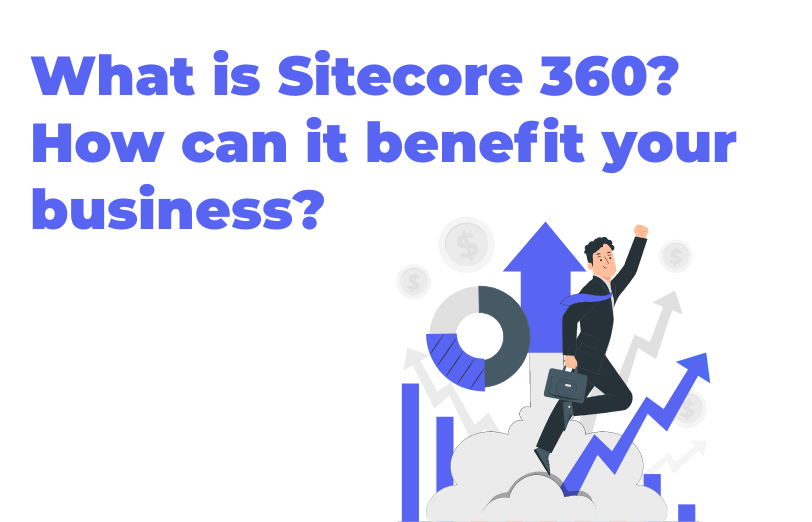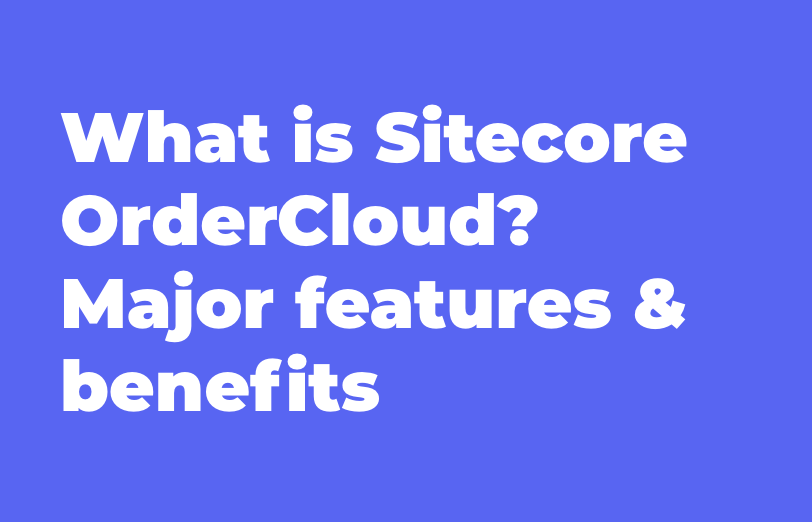Need An Accurate Estimate For Your Sitecore XM Cloud Migration Project? Kickstart Your Journey Here!
Get My EstimateContent is like a puzzle. Your audience wants to see how all the pieces of content on your website fit together and make sense of it all. A content gap indicates this alignment may not be present, or that one piece of content is missing. This can lead potential customers who visit your sit e to think that one thing about your business isn’t clear, which makes them less likely to contact your brand for assistance or use your services in the future. Only 29% of users want to talk to a salesperson when there is an issue with their product and 62% will consult a search engine instead. Content that draws people to your website via engaging blog posts and through inbound marketing delivers leads that are 61% less expensive than outbound marketing leads.
According to Forrester research, the majority of decision-makers agree that the importance of content will become important more than ever before in terms of how firms are perceived on a regional or global level. As firms grapple with identifying value and relevancy amongst increasingly larger competition, analysts argue today’s present company successes are largely linked to how well they position themselves as authoritative thought-leaders in their market.
Capitalizing on lost opportunities is an important element of a successful brand experience. Closing content gaps also helps to prevent customers from leaving by providing in-depth, rich information that keeps them engaged and coming back. Strategies of Sitecore for identifying and capitalizing on lost opportunities will equip you with the tools to do so in a way that meets your company’s goals.
Tracking visitor behavior and inbound marketing efforts using the technology the right way can really help you accumulate data and make informed decisions. Make sure your website is easy to use, but don’t make it too simple either. Know that there are some things you know about using a website and other people do not. Make sure the key features of your website are easily accessible and not hidden, as this often leads to frustration with users who have experienced bad user interface design.

With regards to your content - make sure it gets to the point without being too long-winded or complicated because longer content will more than likely lead to lower engagement rates, which would affect your search engine rankings in a negative way - and all the hard work you put into writing that content would be wasted! The art of tracking an audience's path through a website is called "Web analytics". This also involves examining user behavior, gathering data and analyzing website trends. It is important to analyze your information from a higher position instead of focusing on each individual detail, in order to have a more general point of view about what people are looking for and what they like or dislike.
To access a high-level view of your website, you’ll need to find a tool that includes valuable information about your audience and where they click around. To do this, we recommend using Path Analyzer, the key data points to focus on are what tasks your potential customers are performing and where they are going on your site while they’re doing it. You’ll also want to leverage a tool that provides this comprehensive, high-level view, such as the campaign analytics feature Path Analyzer, a tool that’s built-in to Sitecore Experience Platform. We use Path Analyzer ourselves to understand our own customer journey on Smashing Magazine. One of the biggest benefits is that it provides a bird’s-eye view of which content is most popular with your visitors. Marketers use Path Analyzer more than any other solution to build content strategies with detailed insights into user behave or.
When you've taken the time to understand your target audience's wants and needs, it's time to use that knowledge to produce highly effective content which resonates with them. Your mission is now, whether it be by creating useful information or optimizing existing marketing material in order to capture more web traffic. When our corporate marketing team identified popular content with IT leaders using Path Analyzer, we were able to optimize for related keywords so we ranked higher in organic search and could be found easily by potential clients.

As an example, once our content specialists at Addact were able to uncover popular content about Sitecore commerce we had data on what types of related keywords people were using when searching for information about Sitecore XC. Careful analysis of this data can help inform where you should place these keywords within any given piece of published content or aid in strategizing how you can optimize existing pieces of content with more complementary, related keyword phrases. Of course, no one can tell how a campaign might evolve unless they have insider knowledge about the best ways of capturing the interest of target audiences - which is why you should never stop working hard on producing top-quality information designed around a specific demographic.
A taxonomy is like a map that divides a voyage into manageable parts. We needed to figure out how to efficiently guide people toward relevant content - then we devised a plan and put it in place! To support these initiatives, our Sitecore Content Hub needed an effective taxonomy for organizing content for the web experience. For example, this enabled us to determine where there was a content gap that needed to be filled and whether older content could be reused or repurposed instead of creating something new from scratch. When you define your own taxonomy, you set up guidelines that provide structure for all other subsequent activities which need to be orchestrated together by someone working on site core.
As you begin to identify common customer gaps, start thinking about how you can strategize to fill those content gaps within your overall customer brand experience instead of creating one off content pieces. For example, if you find that a certain audience is consistently searching for a specific keyword on your website where you currently don't have the content they are looking for, don't stop at creating one “what is” article or blog post.

Instead, look into filling the gap in this digital experience by producing multiple rich media content assets around that subject that really take advantage of what today's global consumers are looking for - like web-based white papers and ebooks as well as visual media like infographics and stock photos with explanatory captions or line drawings so that your customers can digest this information in different ways - which always leads to greater brand loyalty!
See how you can map a customer journey by creating a series of awareness content to lead your
audience to the next phase in their research. Well, let’s think about one way awareness
content can be used within product development. There is a big difference between when
consumers are looking for an active/interactive experience versus taking in information
passively.
An example series of Sitecore commerce habitat, technical team has created at Addact: “How
to install Siteecore commerce 9.2”, “Quick deploy habitathome platform”, and “Commerce
engine API debug”. The best practice here is to address gaps that may exist across the
lifecycle by creating the right kinds of content at the right time! By doing so you can
better leverage existing assets and hit relevant audience touchpoints in your funnel with
personalized messaging that also supports effective outbound campaign strategies while
providing non-branded content options for influencers or other third-party audiences along
the way.
Want to improve your Sitecore platform? Get a free audit now!

 About Us
About Us
 Careers
Hiring
Careers
Hiring
 Our Story
Our Story
 Let’s talk
Let’s talk






